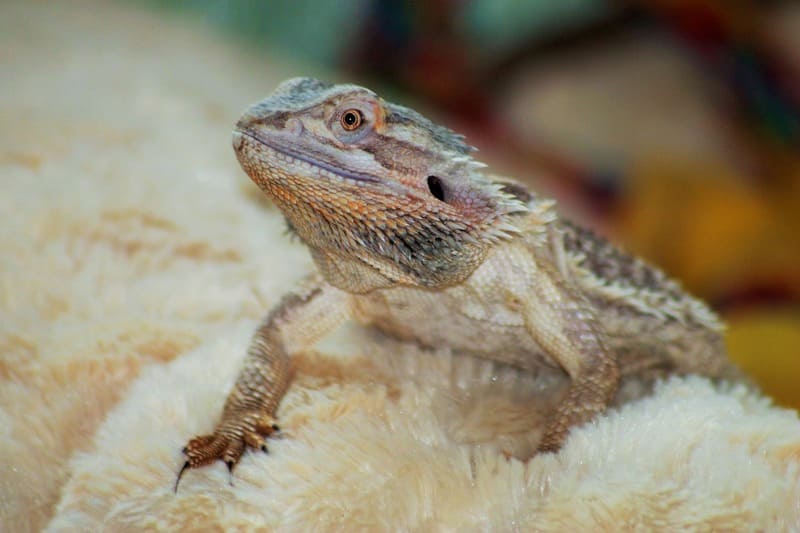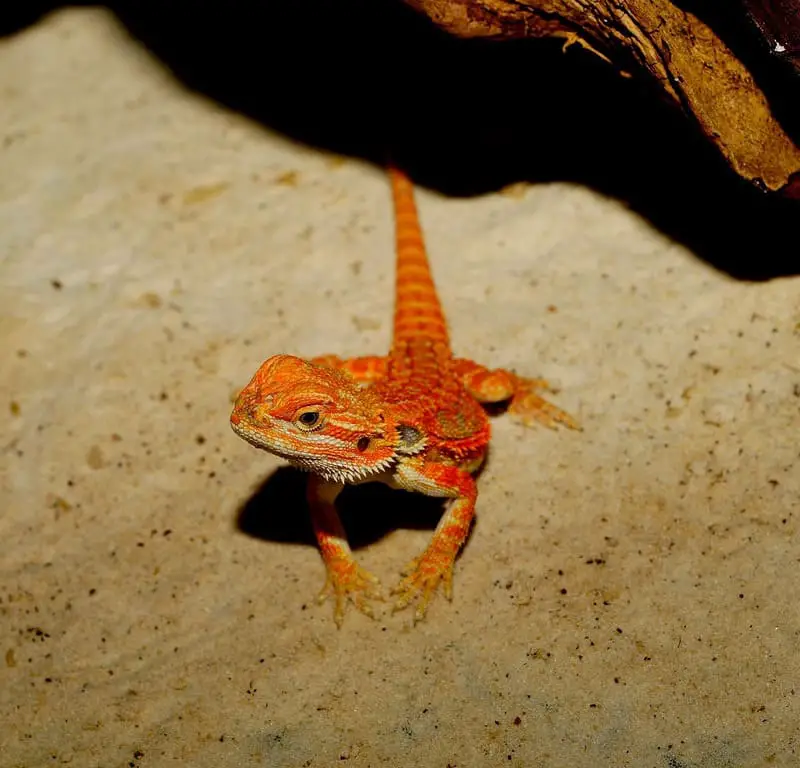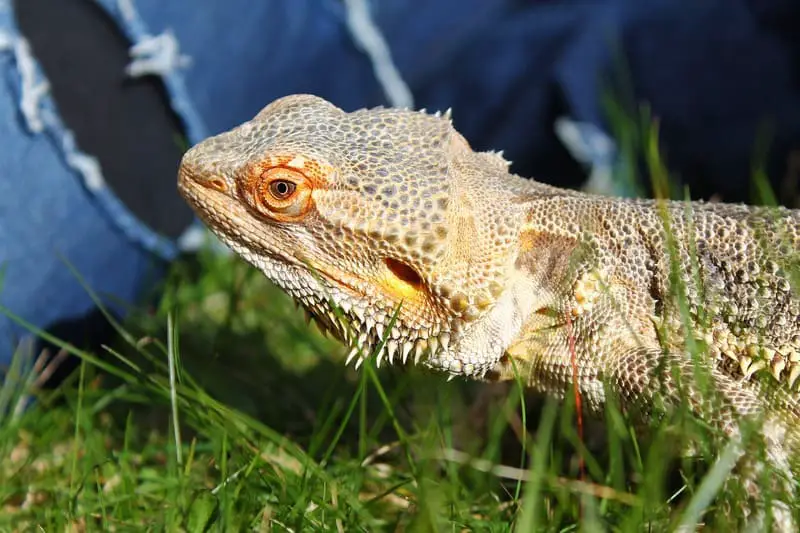Bearded dragons, scientifically known as Pogona, are among the most popular pet reptiles due to their unique appearance, gentle temperament, and relatively straightforward care requirements. One crucial aspect of their care is ensuring they receive adequate hydration. Dehydration is a common issue in captive bearded dragons and can lead to serious health problems if not addressed promptly.
In this comprehensive guide, we will explore the signs and symptoms of dehydration in bearded dragons, the causes of this condition, and essential steps to prevent and treat it. By understanding how to recognize and address dehydration, you can help ensure the well-being of your beloved reptile companion.

Understanding Dehydration in Bearded Dragons
Dehydration is a condition that occurs when an organism loses more fluids than it takes in, leading to an insufficient amount of water in the body. Bearded dragons, like all animals, require proper hydration to maintain various physiological functions. Dehydration can result from several factors, including insufficient water intake, high environmental temperatures, or underlying health issues.
Dehydration can be particularly problematic for bearded dragons because they are ectothermic, meaning their body temperature is regulated by their environment. Maintaining the correct balance of fluids is essential for maintaining their overall health, metabolism, and digestion.
Signs and Symptoms of Dehydration
Detecting dehydration in a bearded dragon requires careful observation of their behavior, appearance, and physical condition. The following are common signs and symptoms that may indicate dehydration in your pet:
1. Sunken Eyes
One of the most noticeable signs of dehydration in a bearded dragon is sunken or slightly recessed eyes. Normally, a healthy bearded dragon’s eyes appear full and round. If you observe that the eyes look sunken or appear less round, it can be an early sign of dehydration.
2. Wrinkled Skin
Dehydrated bearded dragons may have loose or wrinkled skin. In a well-hydrated reptile, the skin should be smooth and taut. If you gently pinch the skin on the bearded dragon’s back, it should quickly return to its normal position. In dehydrated individuals, the skin may remain “tented” or raised for an extended period.
3. Reduced Urination and Fecal Output
Dehydration can lead to decreased urination and fecal output. If you notice that your bearded dragon is not passing waste as frequently as usual, it may indicate a problem. The urates (the white part of their excrement) may become more concentrated, and their feces can become drier and harder.
4. Darker Urates
The urates in a bearded dragon’s waste should typically be white or pale yellow. Dehydrated bearded dragons may excrete darker, more concentrated urates. The urine may become more concentrated, leading to a change in the color and consistency of the urates.
5. Reduced Appetite
A reduced appetite or loss of interest in eating can be a sign of dehydration. Bearded dragons usually have hearty appetites. If they suddenly lose interest in food or consume significantly less than usual, it may indicate a problem.
6. Lethargy
Dehydrated bearded dragons may become lethargic and exhibit reduced activity. They may spend more time resting, basking, or sitting in one spot. A drop in energy levels and overall activity can be a warning sign of dehydration.
7. Sunken Fat Pads
Bearded dragons typically have fat pads on the sides of their head, just behind their eyes. In well-hydrated dragons, these fat pads are relatively full. Dehydrated individuals may exhibit sunken or less prominent fat pads.
8. Dry Mouth and Oral Mucus
Inspect the inside of your bearded dragon’s mouth. In dehydrated reptiles, the mouth may appear dry, and there may be a lack of oral mucus. The gums and tongue can become dry and less moist than usual.
9. Reduced Skin Elasticity
When you gently pull on the skin of a well-hydrated bearded dragon, it should immediately return to its normal position. In dehydrated individuals, the skin may take longer to return to its original state. This reduced skin elasticity is a classic sign of dehydration.
10. Decreased Skin Moisture
Dehydrated bearded dragons may have drier skin than usual. Their scales may appear less supple and more prone to shedding problems. Adequate hydration is crucial for maintaining healthy skin and shedding cycles.
11. Constipation
Dehydration can lead to constipation in bearded dragons. They may struggle to pass feces, and their excrement can become dry and impacted. Constipation is uncomfortable for the reptile and requires attention.
12. Behavioral Changes
Dehydration can also manifest in behavioral changes. Bearded dragons may become more irritable or less active due to discomfort. Changes in their behavior may include increased stress, aggression, or restlessness.
13. Weakness and Muscle Twitching
In severe cases of dehydration, bearded dragons may exhibit muscle weakness and twitching. Dehydration can affect muscle function and lead to involuntary muscle contractions.
It’s important to note that these signs and symptoms may vary in severity depending on the extent of dehydration. Some cases may present with only mild indicators, while severe dehydration can result in more pronounced symptoms. Early detection and intervention are crucial to prevent the condition from worsening.

Causes of Dehydration in Bearded Dragons
Understanding the causes of dehydration in bearded dragons is essential for prevention and treatment. Several factors can contribute to or trigger dehydration in these reptiles:
1. Inadequate Water Intake
Insufficient water consumption is a primary cause of dehydration. Bearded dragons may not drink enough water, especially if they are not provided with a clean and accessible water source. Some may have preferences for drinking from certain types of water containers, such as shallow bowls or droplets on plant leaves.
2. High Environmental Temperatures
Bearded dragons require a basking spot with high temperatures to maintain their metabolism and digestion. However, excessively high environmental temperatures, combined with inadequate humidity levels, can lead to increased water loss through respiration and evaporation from their skin. This can quickly lead to dehydration.
3. Illness or Health Issues
Underlying health problems can lead to dehydration. Gastrointestinal issues, parasites, and other illnesses can affect a bearded dragon’s ability to absorb and retain water.
4. Inadequate Humidity
Bearded dragons need some level of humidity in their enclosure to maintain proper hydration. In excessively dry environments, they may become dehydrated. Additionally, young bearded dragons and those shedding may require higher humidity levels to facilitate the shedding process.
5. Dietary Factors
Diet can also play a role in hydration. If a bearded dragon’s diet consists primarily of dry and dehydrated insects or lacks moisture-rich vegetables, it can contribute to their overall water balance.
6. Lack of Access to Water
Some bearded dragons may have difficulty accessing water if their enclosure is not designed to accommodate their needs. Water containers may be too deep, difficult to reach, or not appropriately positioned within the habitat.
Preventing Dehydration in Bearded Dragons
Prevention is the most effective way to ensure your bearded dragon remains adequately hydrated and healthy. Here are some essential steps you can take to prevent dehydration:
1. Provide Accessible Water
Ensure that your bearded dragon has access to clean and fresh water at all times. Use shallow water dishes or provide droplets of water on plant leaves. Some bearded dragons prefer to drink water droplets, so misting their enclosure can also encourage hydration.
2. Maintain Proper Humidity
Monitor and maintain suitable humidity levels within your bearded dragon’s enclosure. Different age groups may require varying humidity levels, with younger dragons and those shedding often needing slightly higher humidity. Use a hygrometer to measure humidity accurately.
3. Offer Moisture-Rich Vegetables
Include a variety of moisture-rich vegetables in your bearded dragon’s diet. Vegetables such as cucumbers, squash, and leafy greens can contribute to their overall water intake. Be sure to wash vegetables thoroughly to remove any pesticides or residues.
4. Monitor Environmental Temperatures
Maintain appropriate environmental temperatures within the enclosure. Bearded dragons need access to a basking spot with a temperature range of 100-110 degrees Fahrenheit (37-43 degrees Celsius). However, ensure that they have a cooler, well-shaded area within their habitat to help prevent excessive water loss through respiration.
5. Offer a Variety of Water Sources
Some bearded dragons may have preferences for how they access water. Provide multiple options, such as a shallow dish, water droplets on plant leaves, or a dripping system. Experiment to discover which method your pet prefers.
6. Regularly Monitor Water Consumption
Keep an eye on your bearded dragon’s water consumption. A noticeable decrease in their water intake could be an early sign of a problem. Document their drinking habits and consult a veterinarian if you suspect dehydration.
7. Offer Hydration During Shedding
When your bearded dragon is shedding, you can help facilitate the process by increasing the humidity within their enclosure. Provide them with extra hydration by misting or offering water droplets on leaves. This can help soften their old skin for easier shedding.

Treating Dehydration in Bearded Dragons
If you suspect that your bearded dragon is dehydrated, prompt treatment is crucial. Dehydration can escalate rapidly, and addressing it early can prevent further complications. Here are steps to take if you believe your pet is dehydrated:
1. Rehydrate
Gently syringe-feed your bearded dragon with water to help rehydrate them. Use a clean, sterilized syringe (without a needle) and offer water droplets directly into their mouth. Be cautious not to force water into their airway.
2. Adjust the Environment
Maintain appropriate environmental conditions within their enclosure. Ensure that the temperature and humidity levels are within the recommended range to minimize further water loss.
3. Offer Soaking Sessions
You can provide your dehydrated bearded dragon with brief soaking sessions in lukewarm water. These sessions can help them absorb moisture through their skin and rehydrate. Be sure to supervise the soak to ensure their safety.
4. Consult a Veterinarian
If your bearded dragon’s condition does not improve or if they show severe signs of dehydration, it is essential to consult a reptile veterinarian. Dehydrated reptiles may require professional medical attention, including fluid therapy and additional treatments.
5. Adjust Their Diet
Incorporate more moisture-rich vegetables into your bearded dragon’s diet to promote hydration. Consult with a veterinarian or reptile nutritionist to create a balanced diet plan tailored to their specific needs.
6. Address Underlying Health Issues
If an underlying health problem is contributing to your bearded dragon’s dehydration, such as parasites or gastrointestinal issues, it is crucial to address these conditions with the guidance of a veterinarian.
Conclusion
Maintaining proper hydration is essential for the health and well-being of your bearded dragon. These reptiles are vulnerable to dehydration, which can lead to various health problems if left unaddressed. By closely monitoring their behavior, appearance, and physical condition, you can detect early signs of dehydration and take prompt action to prevent it from progressing.
Preventing dehydration through suitable environmental conditions, access to water, and a balanced diet is the most effective approach. If your bearded dragon does become dehydrated, rehydration efforts, environmental adjustments, and consultation with a reptile veterinarian are essential for their recovery. Being attentive to your pet’s hydration needs will contribute to a long and healthy life for your beloved bearded dragon.
